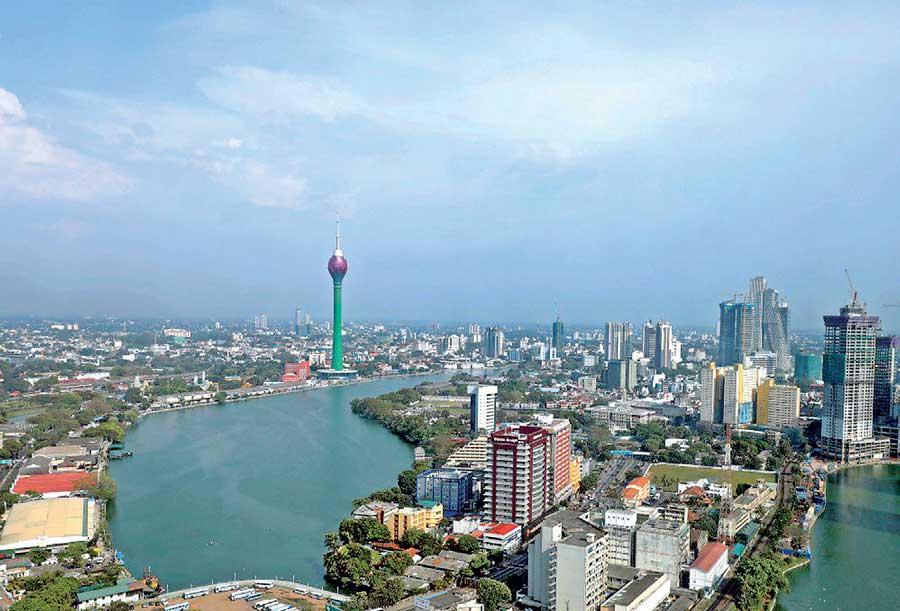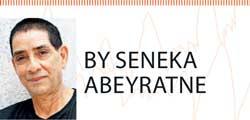03 Oct 2019 - {{hitsCtrl.values.hits}}

 The performance of the Sri Lankan economy has been highly erratic during the period 2006-2018. A plot of GDP growth versus time for this period yields an inverse relationship despite strong growth in some years. As reported in the Daily Mirror (July 12, 2019), the Central Bank (CB) expects GDP to grow by around 3.0 percent in 2019, compared with 3.2 percent in 2018 and 3.4 percent in 2017.
The performance of the Sri Lankan economy has been highly erratic during the period 2006-2018. A plot of GDP growth versus time for this period yields an inverse relationship despite strong growth in some years. As reported in the Daily Mirror (July 12, 2019), the Central Bank (CB) expects GDP to grow by around 3.0 percent in 2019, compared with 3.2 percent in 2018 and 3.4 percent in 2017.
Due to a sizeable outstanding external debt combined with a weak global outlook for the early part of the next decade, the declining GDP growth trend may continue for a while. Radical macroeconomic policy as well as institutional and market reforms will be required to move the sluggish Sri Lankan economy to a higher, export-led growth trajectory with focus on debt sustainability and distributive equity of income.
External debt
The outstanding external debt consists of borrowings by the general government, CB, banking sector, private sector, state-owned business enterprises and direct investment enterprises. When the previous regime came into power (end 2005), the external debt was US $ 11.4 billion. By the beginning of 2015 (when the previous regime went out of power), it had climbed to US $ 42.9 billion. During that nine-year period, the external debt grew by 16.6 percent per annum.
By end-2018, it had increased to US $ 52.3 billion. Under the current regime (2015-2018), the external debt increased at a much lower rate of 5.1 percent per annum. The evidence is clear: the rate of foreign debt accumulation was much higher under the previous than under the current regime. The outstanding external debt/GDP ratio increased from 42.4 percent in 2006 to 54.1 percent in 2014 and from 55.7 percent in 2015 to
58.7 percent in 2018.
The government’s outstanding foreign debt accounts for the largest share of the total external debt (61.2 percent in 2018). It grew from US $ 10.2 billion in 2006 to US $ 24.1 billion in 2014 at an annual rate of 11.3 percent. By comparison, the same indicator increased from US $ 24.7 billion in 2015 to US $ 32.0 billion in 2018 at a lower annual rate of 10.5 percent.
External debt service
During the period 2006-2018, debt service payments, as a proportion of earnings from exports of goods and services, more than doubled from 12.7 percent to 28.9 percent. The steep increase in debt-service payments from US $ 3.6 billion in 2014 to US $ 5.9 billion in 2018 was largely due to the legacy of imprudent foreign borrowings handed down by the previous regime. Total debt service payments, i.e. interest payments plus capital repayments, are likely to remain at high levels in the coming years, which does not bode
well for the economy.
The more foreign currency reserves allocated for servicing the external debt, the less available for financing the country’s urgent development needs. Mounting external debt service payments could therefore be viewed as a serious constraint on Sri Lanka’s economic
and social development.
Gross official reserves
Gross official reserves (GOR) averaged US $ 5.7 billion per annum under the previous regime, compared with US $ 7.1 billion per annum under the current regime. As a rule of thumb, central banks are expected to hold the equivalency of at least three months of imports in foreign currency. In the Sri Lankan context, this translates into US $ 5.5 billion at the 2018 year-end exchange rate of Rs.183 to the US dollar. GOR declined precipitously from US $ 8.0 billion in 2017 to
US $ 6.9 billion in 2018.
As reported in the Daily News of August 2, 2019, the level of foreign currency reserves rose to US $ 8.6 billion in June 2019. This recovery was achieved largely through the issuance of two international sovereign bonds (ISBs): one for US $ 1 billion with a five-year tenor and the other, for US $ 1.4 billion with a 10-year tenure
(Daily Mirror, May 17, 2019).
ISBs are long-term debt-security instruments, which fall within the ambit of high-cost, commercial borrowings. In 2018, outstanding government debt in the form of ISBs amounted to US $ 11.6 billion. In relative terms, this represented 93.6 percent of government debt securities and 36.2 percent of the government external debt. Since, by issuing ISBs, government is in effect borrowing money at high cost to meet external debt service obligations, it raises serious concerns about debt sustainability in the long run, as discussed below.
GOR are a mix of non-debt-creating and debt-creating capital inflows. In Sri Lanka, the mix is tilted towards the latter category, which includes IMF loans, project loans, term loans and government debt-securities.
The two main items in the former category are foreign direct investments (FDI) and equity investments. The undesirable consequences of relying mainly on commercial borrowings to service the external debt are discussed in a perceptive Sunday Times editorial published on March 3, 2019. This unhealthy practice, initiated by the previous regime, is being continued with gusto by the current regime.
The article suggests that with the country caught in a debt trap, a rollover crisis is inevitable (other factors held constant).
Project loans represent the largest share in Sri Lanka’s total foreign debt (roughly 35 percent). Why go for commercial loans, the editorial asks, when project loans are cheaper and have a much longer repayment schedule? During the 2014-2018 3 period, total interest payments on project loans ranged from US $ 260 to US $ 425 million per annum while corresponding payments on commercial loans ranged from US $ 616 to US $ 855 million per annum. Clearly, project loans exert far less pressure on debt service obligations than commercial loans.
The editorial recommends that government should, as far as possible, substitute project loans for ‘footloose’ commercial loans with a view towards attaining a prudent level of external debt service. Simultaneously, a coherent strategy should be implemented for stimulating sustained growth of net exports as well as net FDI inflows so as to redress the imbalance between non-debt creating and debt-creating capital inflows to the
financial account.
External debt trap
Debt service payments spiked from US $ 4.6 billion in 2017 to US $ 5.9 billion in 2018 – a 23.2 percent increase in just one year. This was mainly to a number of international bonds issued by the government-owned or controlled banking sector prior to regime change maturing in 2018. The bond repayments amounted to US $ 1.3 billion.
A sharply rising level of debt service payments when accompanied by substantial net capital outflows from the debt securities market (which includes treasury bonds, treasury bills, Sri Lanka Development Bonds, ISBs and international bonds) could lead to a rapid depletion of GOR, which is what happened in 2018. The CB compounded the problem by aggressively selling dollars in the domestic foreign exchange market to prevent further depreciation of the rupee. By issuing two ISBs totalling US $ 2.5 billion, the government was able to avert a potential balance of payments (BOP) crisis.
The current regime seems to be adding fuel to the fire. The available evidence suggests that it is depending largely on commercial borrowings to maintain GOR at a ‘safe’ level. One could therefore argue that Sri Lanka is indeed caught in a debt trap. When a country is forced to roll over the external debt due to a paucity of foreign currency reserves, it creates a downward spiral from which it cannot escape.
The point will eventually be reached when it can no longer avert a severe BOP crisis caused by the plummeting of GOR to a dangerously low level. Government will then be forced to adopt a massive, IMF-supported structural adjustment package to avoid defaulting on the external debt.
It would be appropriate to conclude this article with a quote from the well-known financial analyst, Frances Coppola: “Don’t saddle yourself with huge amounts of debt because that can come back and bite you.”
(Data sources: Central Bank annual reports, various years)
(Seneka Abeyratne, a retired economist/international consultant to ADB/Manila, can be reached via [email protected])
27 Dec 2024 2 hours ago
27 Dec 2024 2 hours ago
27 Dec 2024 3 hours ago
27 Dec 2024 4 hours ago
27 Dec 2024 4 hours ago